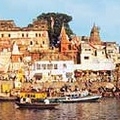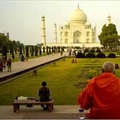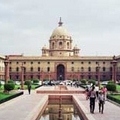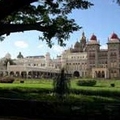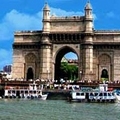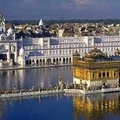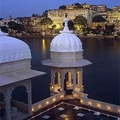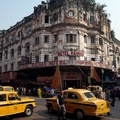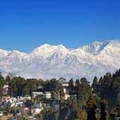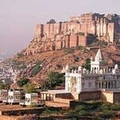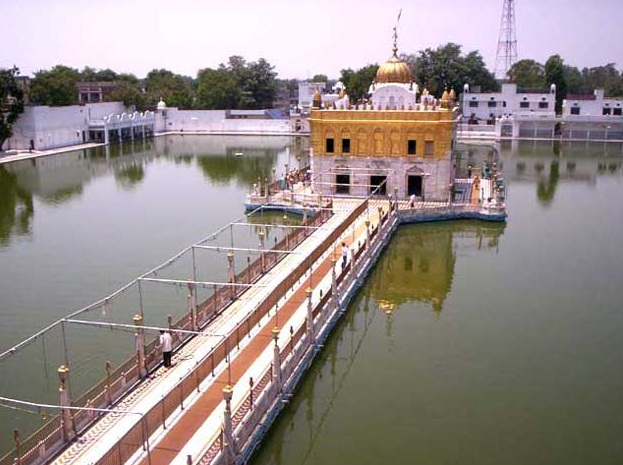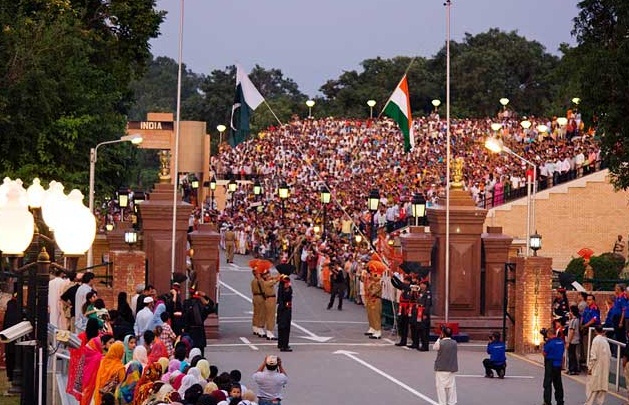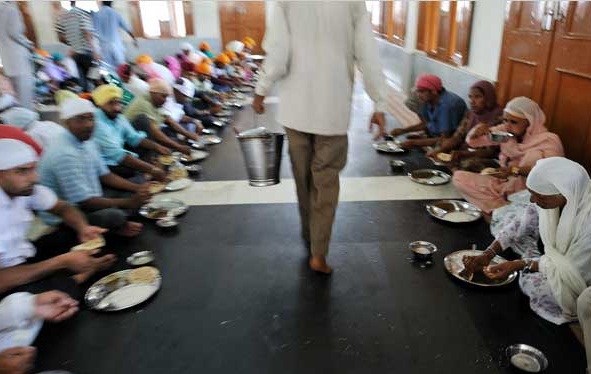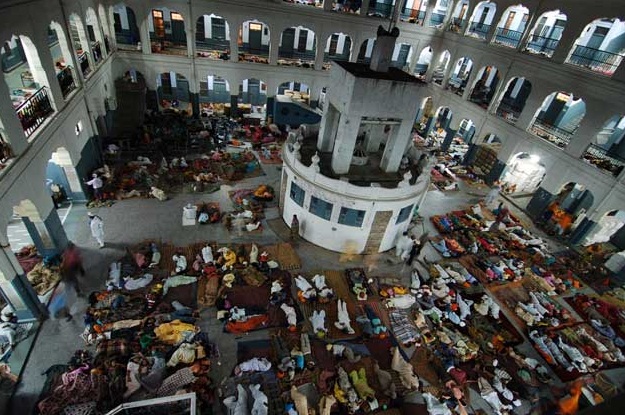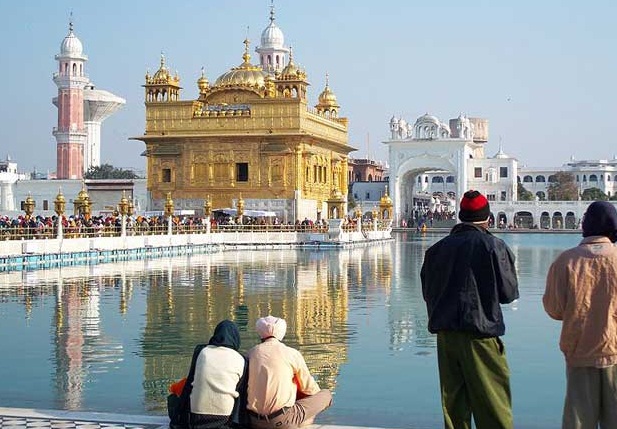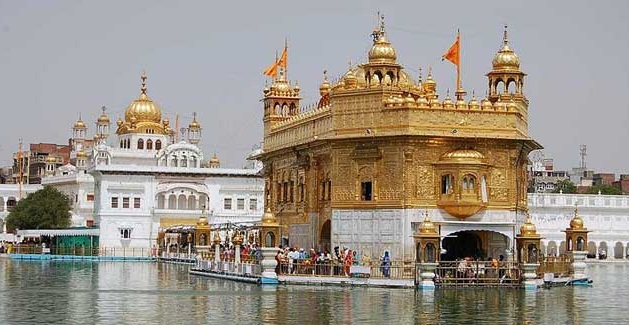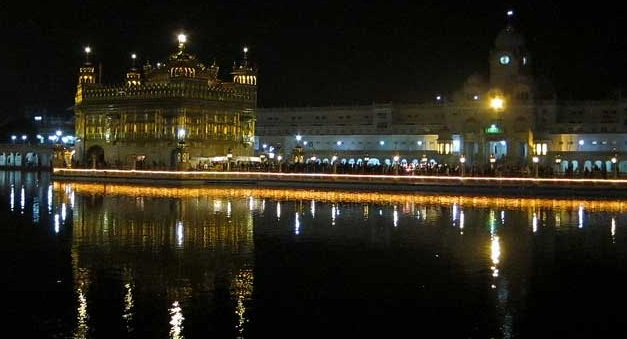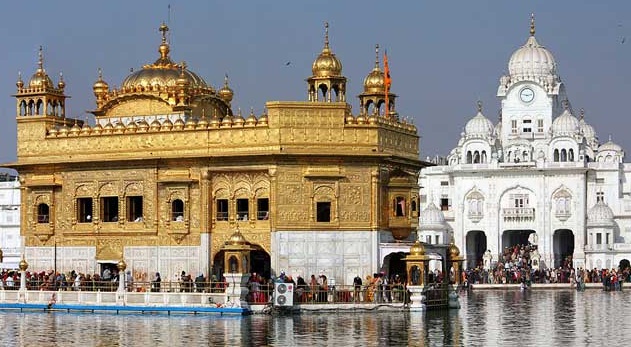Destinations / The Best Cities to Visit in India / Amritsar - The Golden Temple city
Amritsar - The Golden Temple city
Amritsar is a major center of cultural, religious and political history of the Sikhs. The residents are proud of their city, but above all they are proud for the beautiful and the unique Golden Temple, which serves the spiritual center for the 20 million Sikhs worldwide. The construction of the temple was initiated by Ram Das, the fourth Guru of Sikhs and was completed in 1604 by his successor, Guru Arjan Dev. Currently, the Golden Temple is the main tourist attraction of Amritsar. Every day it attracts tens of thousands of pilgrims from all over India. This important Sikh shrine attracts more visitors than the famous Taj Mahal in Agra . Cover your head with a scarf, take off your shoes and wander around one of the most amazing places in India. Amritsar: General Information The most sacred temple of the Sikhs is located on the site which was once surrounded by a forest lake. Its construction is connected with the foundation and the development of the city of Amritsar. Harmandir Sahib (meaning The Temple of God) was built and destroyed many times before. In the late 1700s has been restored the option that we can see today. In 1802 Harmandir Sahib was covered with gold plates and became known as the Golden Temple. The beauty of the gilded buildings, embodies the blend of Hindu and Muslim architectural styles and enhanced the reflection in the water, compared to some of the Taj Mahal.
History of Amritsar
In the 20th century Amritsar overshadowed massacres and armed conflicts. The first occurred in 1919 on an area of Dzhallianvalabagh, the place of the bloodiest massacres in the days of British India, the testimony of one of the most shameful episodes in the British colonial history. The area is located in the heart of Amritsar near the Golden Temple. The British General Reginald Dwyer, being the vice-governor of the province in 1919, banned all rallies and demonstrations of the Indians. On April 13, 1919, a huge number of pilgrims came to Amritsar to celebrate Vaysakhi - one of the greatest festivals in the Sikh calendar. In the afternoon thousands of people gathered on the square of Dzhallianvalabagh. The general Dwyer personally led the troops to the area and ordered his men to open fire without warning. Official sources of the British government called the death toll - 379 men. The Indian National Congress claimed about 1000 victims. The actual death toll is unknown, but probably much higher than 379. The perturbation of the Indians knew no bounds. Gandhi called for a nationwide strike, a movement which was not cooperation, but became a milestone in the struggle for the Indian independence. Today, this area in the heart of Amritsar turned into a park. The section of British India into India and Pakistan made a huge impact on the demography, economy, social structure and culture of Amritsar. Punjab was divided between India and Pakistan and Amritsar became a border city, often on the line of the Indo-Pakistani conflict. Before partition, the Muslim League of India wanted to include Amritsar in Pakistan on the basis that about 50% of its population were Muslims, but the city became part of India. The Indian National Congress similarly intended to include the nearby city of Lahore in the India, which was the cultural, the economic and the political capital of Punjab and the number of Hindus and Sikhs, it was about 50%, but Lahore became part of Pakistan. Amritsar and Lahore experienced a terrible civil unrest during the partition of India. Muslim residents of Amritsar en masse left their homes and property due to the violent anti-Muslim pogrom in the town. Similar scenes of mass carnage against Hindus and Sikhs occurred in Lahore and has led to a mass evacuation to India. When British India has gone, Amritsar was covered by another wave of violence. In 1984, a Sikh fundamentalist Dzharnayl Bhindranval Singh and his followers occupied the Golden Temple in the campaign against the Sikhs for an independent state, Khalistan. In 1984, the Prime Minister Indira Gandhi authorized action under the code name Blue Star, an operation to destroy the Sikh separatists in the Golden Temple.
Acting on the orders of the Prime Minister Indira Gandhi, the Indian Army attacked militants in the temple, killing Bhindranvala and other terrorists, along with many civilians caught up in captivity, the Golden Temple was severely damaged. Conducted by an Indian military operation in Amritsar with tanks and armored vehicles has been successful in military terms, but has caused widespread controversy in the Indian society and led to the rise of Sikh terrorism. Many Sikhs were fired from the armed forces, leaving the civil service, returned the award from the Government of India. Four months after surgery, on 31 October 1984, Indira Gandhi was assassinated by two Sikh bodyguards. The Sikh community refused to government resources to repair the damaged Golden Temple and had all the work themselves. Although all the cracks and crevices have been repaired, the incident was not forgotten and you will find a lot of people in Amritsar, seeking to explain what had happened the way the Sikh side sees. To date, Amritsar is a typical Indian metropolis: a bustling, with dirty streets and wandering cows. It is the largest city in the Punjab (over one million inhabitants). Despite the fact that Amritsar is a center of pilgrimage, you will not see large crowds of tourists. On arrival at Delhi international airport, most tourists flock to Agra , Goa and Jaipur , often losing sight of Amritsar, just six hours away by fast train, or at least an hour by plane from Delhi .
Amritsar Attractions
The Golden Temple
The Golden Temple, this huge complex of gleaming marble, bronze and gold leaves, is located in the heart of the city of Amritsar. There is a legend that its gilded dome of the 750 kilograms is made of pure gold. The residents of Amritsar, Harmandir Sahib called it the God 's Church. It is the most sacred place in the Sikh religion, a minor religion in India. It is a shining example of commitment to the Sikh faith, which actively preaches unity and equality of all religions. The Golden Temple combines the beauty of architecture and has truly a sacred atmosphere. The way believers worship the temple, is enough to polonium your attention and heart. Harmandir Sahib can visit people of all faiths, but you must wash the feet and cover your head with a handkerchief color, demonstrating thereby respect for the religious customs of the Sikhs. Entering into the gates of the temple, the pilgrims and tourists' eyes are surrounded by a lake, a gilded temple, the beauty of which some have even been compared to the Taj Mahal. Having explored the interior of the church, all are invited to eat for free in the main hall. Food is an important part of Sikhism, a joint meal in the Temple brings together people of different social status and creates a harmony between all the parties.
The Temple complex in Amritsar can be called the largest soup kitchen in the world, generosity is simply amazing. It is hard to dispute this assertion. Every day, up to 30,000 people visit the temple to receive free meals. On weekends and public holidays - twice. And interestingly enough, the food is prepared and served primarily by volunteers. About 1,000 volunteers help every day. They could be anyone, regardless of religion or social status. There are those who have a prestigious job, such as bank managers. Here, all volunteers Indians of all faiths and social status. Despite the current tension between the Sikhs and the Hindu majority in India, people of all religions, without exception, can come and eat or volunteer work as a volunteer in the Langar (community dining room.) Food is distributed in the dining room without any furniture.
Visitors sit on the floor, volunteers hand out portions of vegetarian food: dhal (traditional Indian vegetarian soup of beans), rice, vegetables and chapatis (Indian bread made from wheat flour). At the end of each meal a group of janitors sweep and wash the concrete floors. No one is starving here. Anyone can come here and feed at any time, 24 hours a day. Sikhism, which emerged in the Punjab in the 15th century, strongly rejects the notion of caste that underlies Hinduism. The Golden Temple in Amritsar seeks to realize this principle, most clearly manifested in the kitchen, where everyone, regardless of religion, wealth or social status is considered equal. The first Sikh guru, Nanak, laid the foundations of public kitchens, whose aim, he says, " is to make all people equal." Volunteering and community mutual aid is another principle of Sikhism - selfless service. When the Mughal emperor Akbar tried to give Guru Amar Das dish with a gold coin as a donation to the kitchen, he refused to accept them, saying that the kitchen "contained the blessing of the Almighty."
The temple complex has a bedroom, where tourists and pilgrims are free to spend the night. You can stay here for three nights, and no one will ask you some questions. Accommodation, of course, is in Spartan style. Unlikely to deliver a great pleasure to sleep on the floor with a huge gathering of people in the room with the missing hot water, but this way you can better feel the atmosphere of the Golden Temple and the kindness of his parishioners, is never forgotten. Visiting Amritsar, you will not hesitate the occasion of this opportunity. Indians of all faiths come to Amritsar and visit the temple to find the peace that is so lacking huge, over one billion population of India. The Golden Temple in Amritsar to visit twice, once during the day and once during the night when it is beautifully illuminated.
Durgiana Mandir Temple
Located in the city of Amritsar, the temple Durgiana Mandir is a major Hindu temple in Punjab. It is sometimes called the Silver-coated silver from the temple carved doors. The temple was built in 1921, following the example of the Sikh Golden Temple. Like the Golden Temple, Durgiana Mandir is also situated in the center of the lake and is also connected to the ground by a long unmade track and also has a golden dome. What is striking in comparison with the Golden Temple is the lack of volunteers and a large number of believers.
Wagah
Many tourists from the city of Amritsar tour to the nearby village of Wagah (8 km), which conducted the ceremony lowering of national flags of India and Pakistan. Wagah border was the only point between the two countries before the opening of Aman Setu in Kashmir in 1999. Through the Wagah was controversial Radcliffe Line, according to which the eastern part of the settlement departed India and the western half in Pakistan. Lowering of the flags at the Wagah border crossing is the official daily ceremony of the armed forces of India and Pakistan since 1959. This ceremony is held every evening before sunset. The ceremony begins with a ceremonial procession of soldiers of both countries. The soldiers lift their leg to the level of the the height of their heads and then abruptly stomp it on the ground that serves as a demonstration of contempt for the opposite side. Then go down national flags, friendly handshakes and close the gate until the next morning. The ceremony lasts 40-45 minutes, attracts many visitors from both sides of the border and tourists from around the world. On both sides of the border, crowds of people rip their vocal chords and spare no applause, supporting each of the parties. Visiting Amritsar, you cannot miss this colorful ceremony.
Others The Best Cities to Visit in India .
Maps of Amritsar - The Golden Temple city
map IndiaOthers from The Best Cities to Visit in India
You can stay at different hotels and chalets in India, which are available in abundance.
You can even opt for holiday rentals apartments which can be found in all towns.
There are various holiday villas in many cities to promote tourism.
Here, we present the top cities with landmark tourist spots as well.
Geographical position India is a country in South Asia.
India is the 7th place in the hierarchy of countries by area, second only to the number of inhabitants and democracy to most people.
Neighborhood India has a coastline with a length of seven thousand kilometers and the western border with Pakistan, Nepal, China, Bhutan and Bangladesh in the northeast and Mynmar in the east.
In the Indian Ocean, it is adjacent to Sri Lanka, Maldives and Indonesia.
The Relief India has three natural regions: the region of high mountains, Indo-Ganges Plain and the Deccan Plateau.
The region of high mountains in the north and northeast of the country comprises most of the Karakorum Mountains and part of the Himalaya Mountains.
High mountains covered with snow are persistent, there are many glaciers which are strongly fragmented by rivers.
Indo-Ganges is an alluvial plain, low and smooth.
The landscape is formed from the large Indian peninsular Deccan Plateau with sharp edges which are based on coastal plains.
The most important river of India is the Ganges.
Climate The climate of India is tropical monsoon with different shades, depending on the altitude and the available relief.
In the Northeast and in some areas protected from the wind very little precipitation falls on the Deccan Plateau, western slopes of Western Ghat region at the foot of Himalaya receive a large amount of precipitation.
Tourism Home of the Hindu civilization of the valley, the center of trade routes and vast empires, India has played a major role in the human history.
Brahmanism, Hinduism, Sikhism, Buddhism and janismul originated in India, while Islam and Christianity enjoy a rich tradition here.
Colonized as part of the British Empire in the nineteenth century, India gained independence in 1947 as a unified nation after sustained effort made in this direction.
Population, creatures,the geographical and climate system are among the most diverse in the world.
You may also remember that India is the home of pepper.

